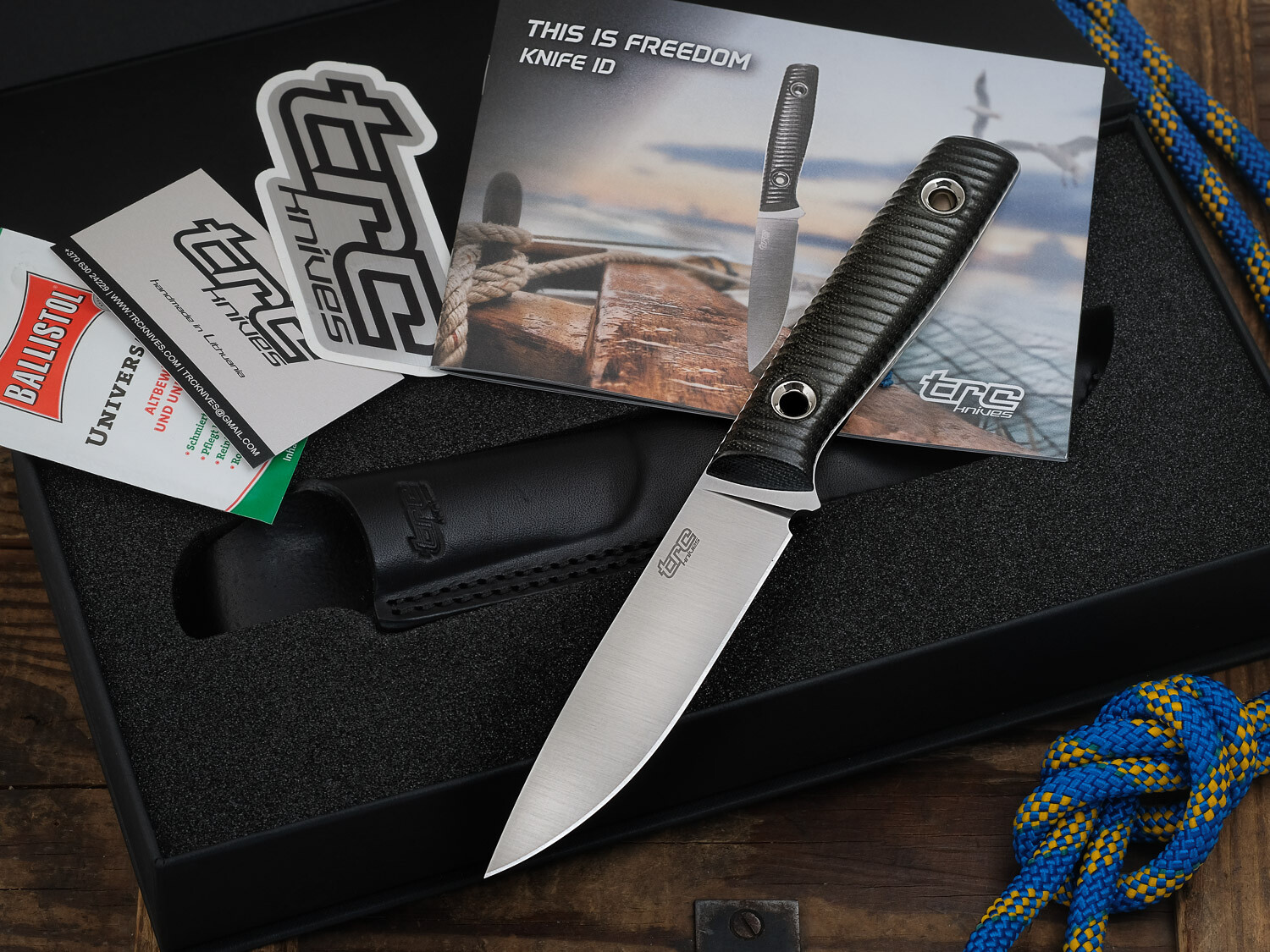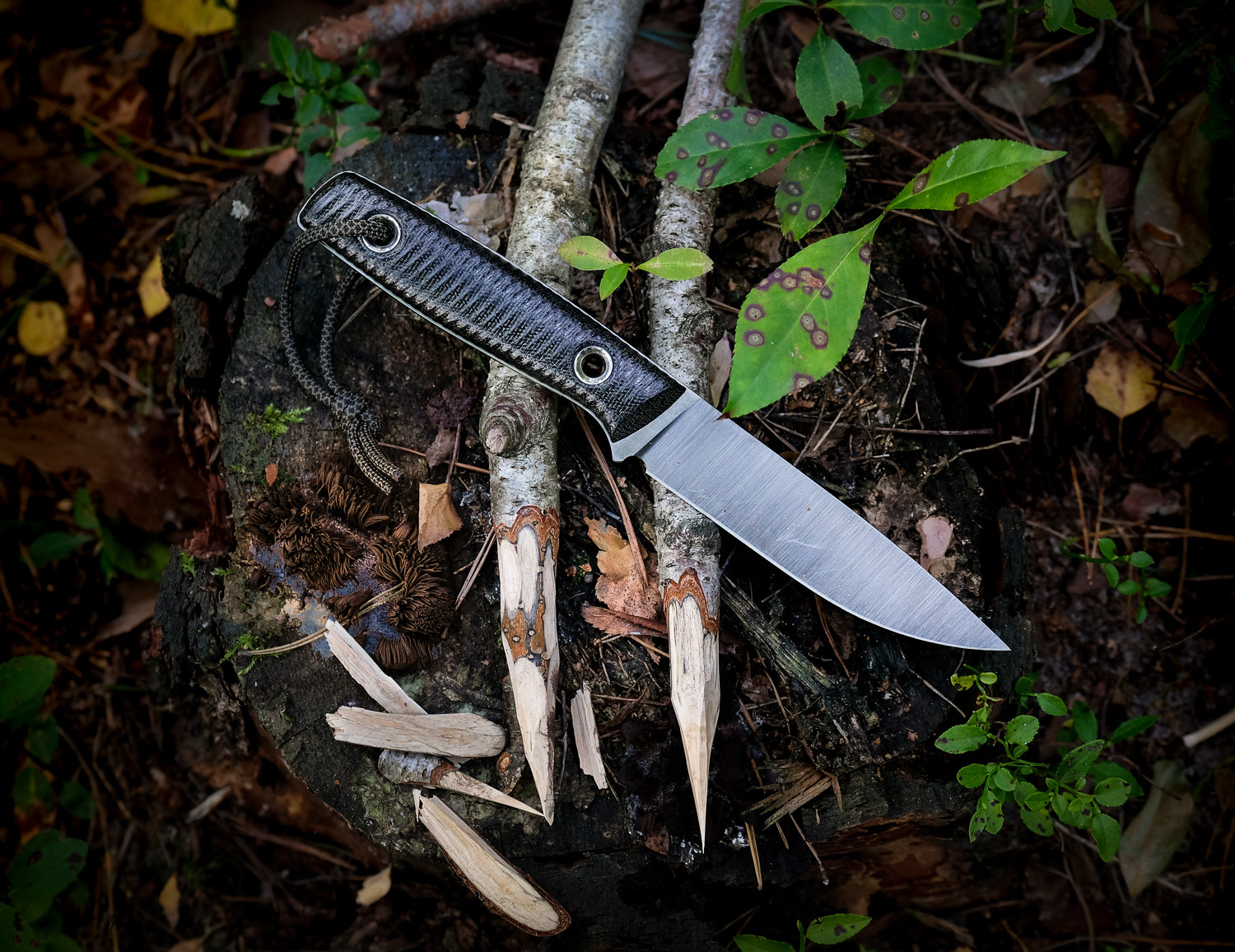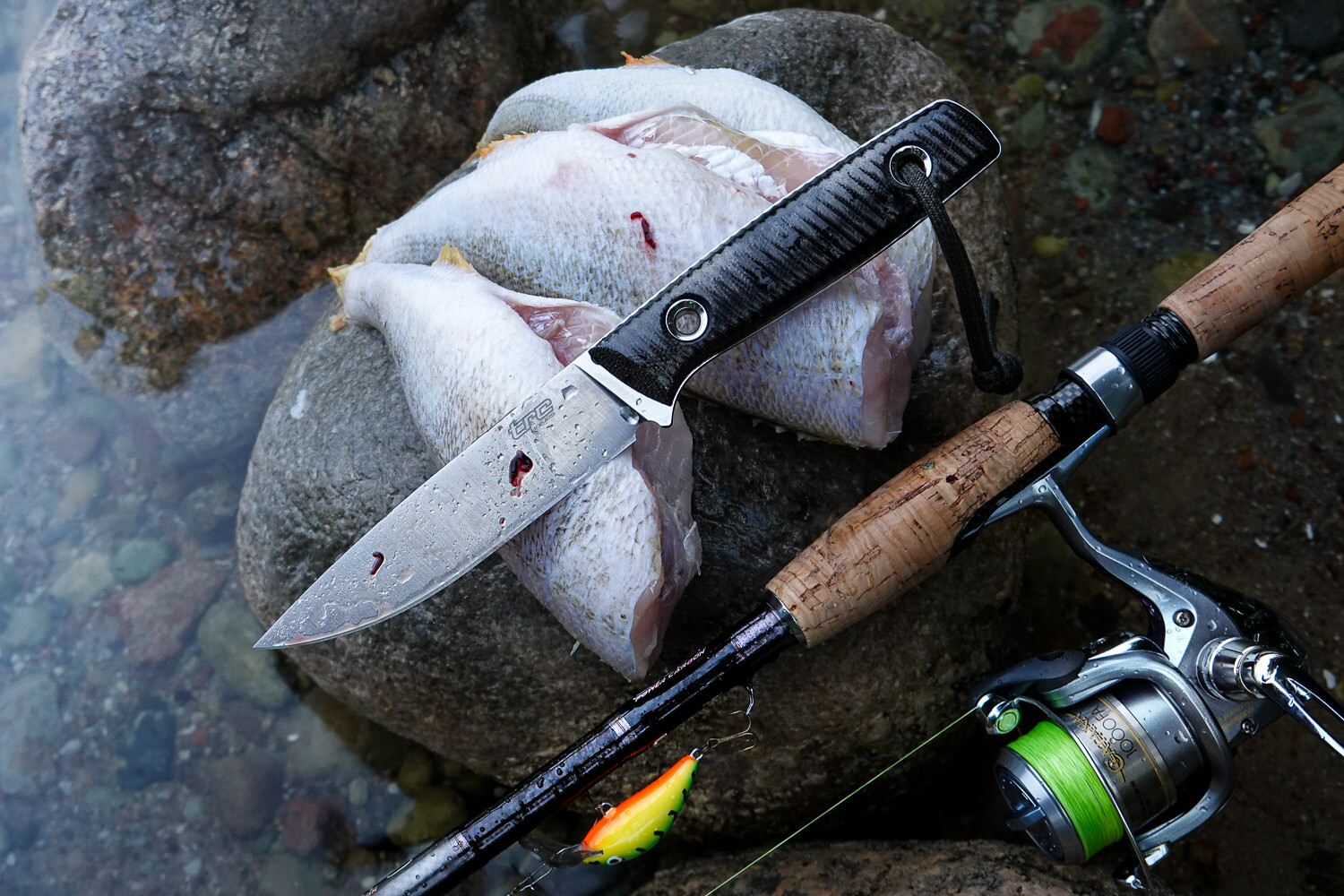I’ve been hiking for most of my life, more than 3 (and a half) decades now. I’ve been a scout for years and bushcrafting before bushcraft was cool. So it shouldn’t be a surprise for you that I can’t imagine doing any major outdoor adventure without a fixed blade on my belt. It’s just a must-have. Folders are cool, but a fixed blade is a true outdoorsman’s tool and the TRC “This Is Freedom” is a good example of such a knife.
The TRC This Is Freedom is an archetypal knife. Close your eyes, think “a knife” and a big chance is you’d see just its classic shape.
It’s actually a refined variant of a previous model by TRC, the Splinter. Designed by Mikhail ‘Pehota’ – outdoorsman and hunter, who spent a lot of his time in northern type forests, usually cold, hostile and often covered with snow. So he really knows what to look for in an outdoor knife.
Starting from the handle – bolted solid slabs of micarta with a polished fluted sculpturing, that ensures extremely positive grip, comfort and safety.
The handle size is quite generous and really fills my hand, it’s secure and not too small even when I’m wearing work gloves (size #10). The minimalistic guard does its job, but make sure your grip is firm enough, especially with using a thrusting motion.
The Scandinavian puukko heritage is obvious in this knife. It’s a classic, timeless design with an almost 5-inch blade, ground in 3.5mm (0.135 inch) stock of M390 steel. Its a full tang construction, but thanks to the skeletonized tang, an overall slim design and a blade with a distal taper this knife put on a scale weighs a mere 145 grams (or a hair over 5 oz. if you want) – pretty lightweight for a 5-inch bladed knife.
Mors Kochanski
“The more you know – the less you have to carry”
Mors Kochanski, the father of modern bushcrafting, once said: “the more you know – the less you have to carry”. And that’s exactly the case with the TIF – if you know how to use a knife in the wild you really don’t need a heavy one.
It comes crazy sharp from the factory, but that is no surprise. TRC is actually more a mid-tech knife than full-scale production company, with a lot of operations done by hand with extra care, and that includes grinding, sharpening and stropping.
It’s easily one of the sharpest knives out of the box I’ve ever experienced. Again – the attention to detail at TRC is just outstanding. Quality, not quantity!
And last but not least… the sheath. The TIF comes as standard with a high quality slip-in style leather sheath with a belt dangler. Leather is tough, thick and meaty, impregnated for protection against the elements and perfectly stitched. TRC makes some of the best leather sheaths in the industry, and I’m not exaggerating.
But there’s nothing you can’t improve, so over time I upgraded the sheath with a removable firesteel keeper and made another dangler with a quick detach feature. I also made my own kydex as a second carry option, which I prefer for fishing, kayaking, etc. so now I have a complete set of modular sheaths which I can configure for any kind of outdoor adventure. Of course you can order an original TRC kydex sheath but I’ve been making kydex sheaths for a decade or more, so I just built my own.
I assigned it to be my camp kitchen knife of summer 2020 and used it a lot for general cutting, slicing, chopping and other food-prep tasks. With a moderate 3.4mm thickness and full flat grind it literally flows through food.
Also the cleaning of fish, meat and small game in the field was effortless. Even without the typical flex of a dedicated fillet knife it was really easy to use on the classic lake catch like a perch or a pike.
Batoning is not something I’d do on regular basis with the TIF, or at least without a real necessity. I tried some light batoning and the knife did fine, but that superfine tip is not something I felt comfortable to baton. And of course with a knife you really can’t out-chop an axe, so get a proper tool if you expect serious firewood processing.
Preparing feather sticks with the TIF is a real joy, this knife is made for it – with curls that are fine and long. And, just like in the South Pole, the actual edge of the slightly rounded spine is sharp and delivers very nice sparks when used on a ferrocerium rod. By the way that ferro-rod loop, which you can see in some photos, is something I made myself, so it’s not part of a package. I made it removable as sometimes I simply don’t need it and prefer going really lightweight instead.
General whittling and camp jobs (like making tent stakes or pot hangers) was a cinch. The thin edge plus a full flat grind is a classic recipe for a good whittler.
It can’t match a true scandi-ground carving knife, but it’s really very close. It cuts deeply and produces nice, big chips. Without a doubt the TIF is a very capable whittler and truly shines as a bushcraft knife.
It’s not my only TRC, but it’s very different from the others, being slimmer and lighter than its similarly sized siblings. So a natural question is – how does it stand up against the South Pole, a slightly shorter but also beefier knife in the TRC lineup?
For sure the South Pole is heavier, stronger and more forgiving when treated roughly. However, in cutting, food-prep and whittling tasks the This Is Freedom in experienced hands performs slightly more efficiently thanks to thinner blade stock, full flat grind and the distal taper profile with a needle-sharp point.
The South Pole might be generally better suited for heavy duty jobs in worst conditions, while the TIF excels in classic summer outdoor adventures, like hiking, mountaineering, kayaking and such.
If you’re an experienced outdoorsman This Is Freedom could be like the Ferrari of the knife world in your hands, turning circles around most of other blades.
It’s a superbly efficient cutting tool in the shape of a classic Puukko from Lappland, which has been evolving for thousands of years to become one of the most effective field knives ever.
For me personally the TRC This Is Freedom has been a general do-it-all fixed blade of this summer, and it will continue as my default choice for many more outdoor outings, I’m sure. Not just this year but also for the future – any season, any destination.












Hi, I love the design of both these knives the south pole and the TIF. I was wondering which one you would suggest to buy for hunting considering i hunt reebocks and deer